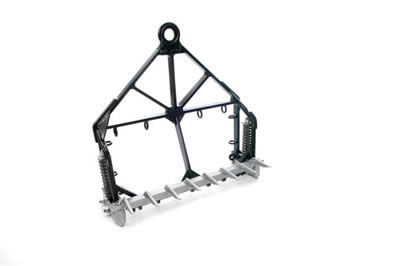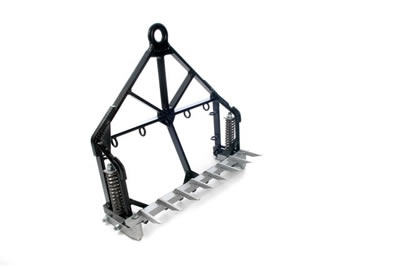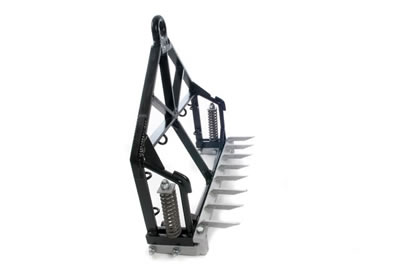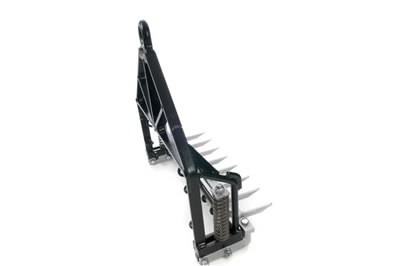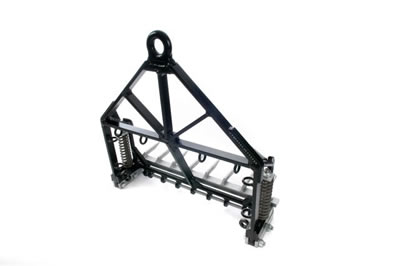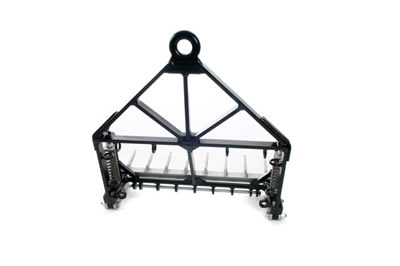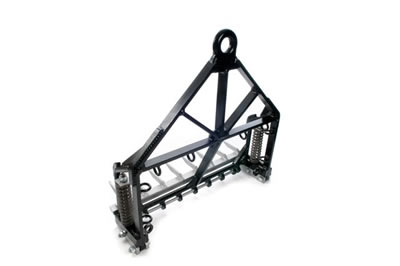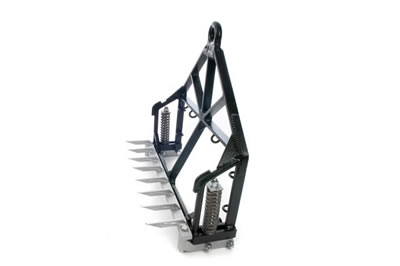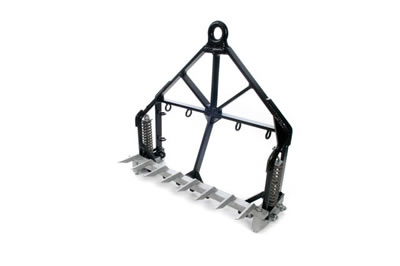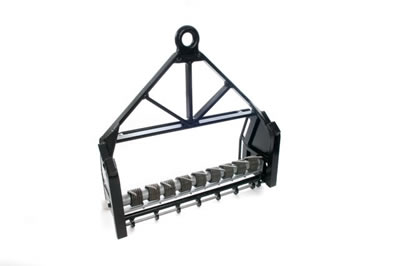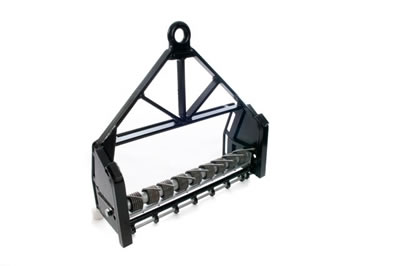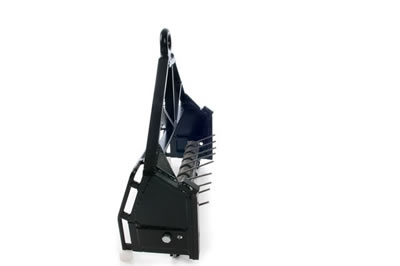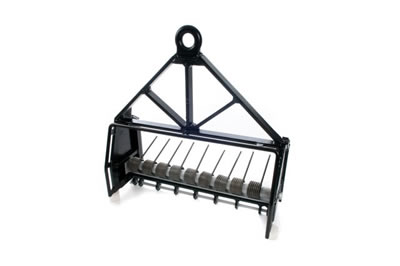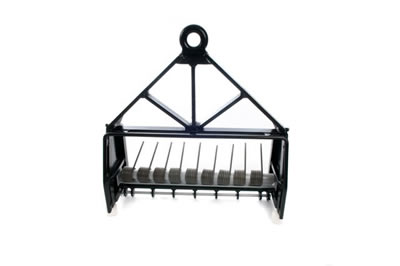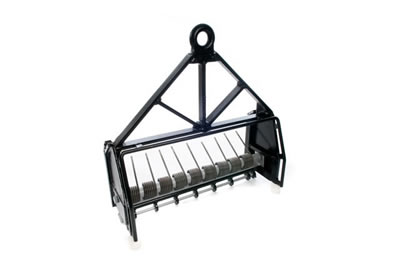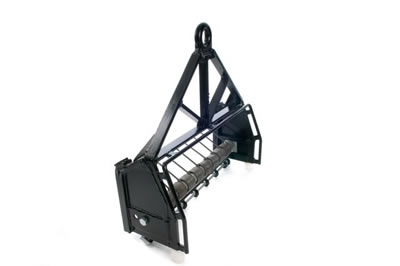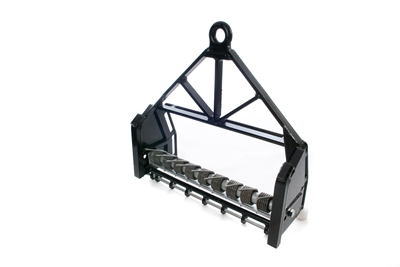Traditional Scallop dredge
A traditional (or Newhaven) scallop dredge consists of a triangular frame which supports a rake or tooth bar and is attached to a steel net or belly. The rake digs the scallops from the seabed and deposits them into the net which holds them until returned to the vessel for emptying.
Each dredge measures 76cm wide and they are mounted onto a towing bar, the number of dredges depends on the size of the vessel used to tow them, but can be anything from 2 dredges on two bars – one on each side of the vessel – to two sets of 22 dredges.
The vessel lowers the two bars side by side to the seabed and will then drag them from one to two hours before hauling them back aboard for emptying.
N-Virodredge™
The N-Virodredge™ is a completely new concept in the harvesting of scallops and the first significant variation over the traditional scallop dredge design which has been in use in European waters over the last 40 years.
The N-Virodredge™ runs along the seabed on two skids which bear the full weight of the dredge. Mounted between the skids are a number of spring tines. These tines move individually as opposed to a traditional dredge in which the teeth are mounted together and move as one. The tines are vertically adjustable for depth of seabed penetration below the level of the skids therefore penetration can be kept to an optimum depth at all times therefore increasing the catching efficiency of the dredge.
The dimensions are exactly the same as a traditional dredge as are fitments to attach to the vessel, therefore swapping between dredges is very simple.




